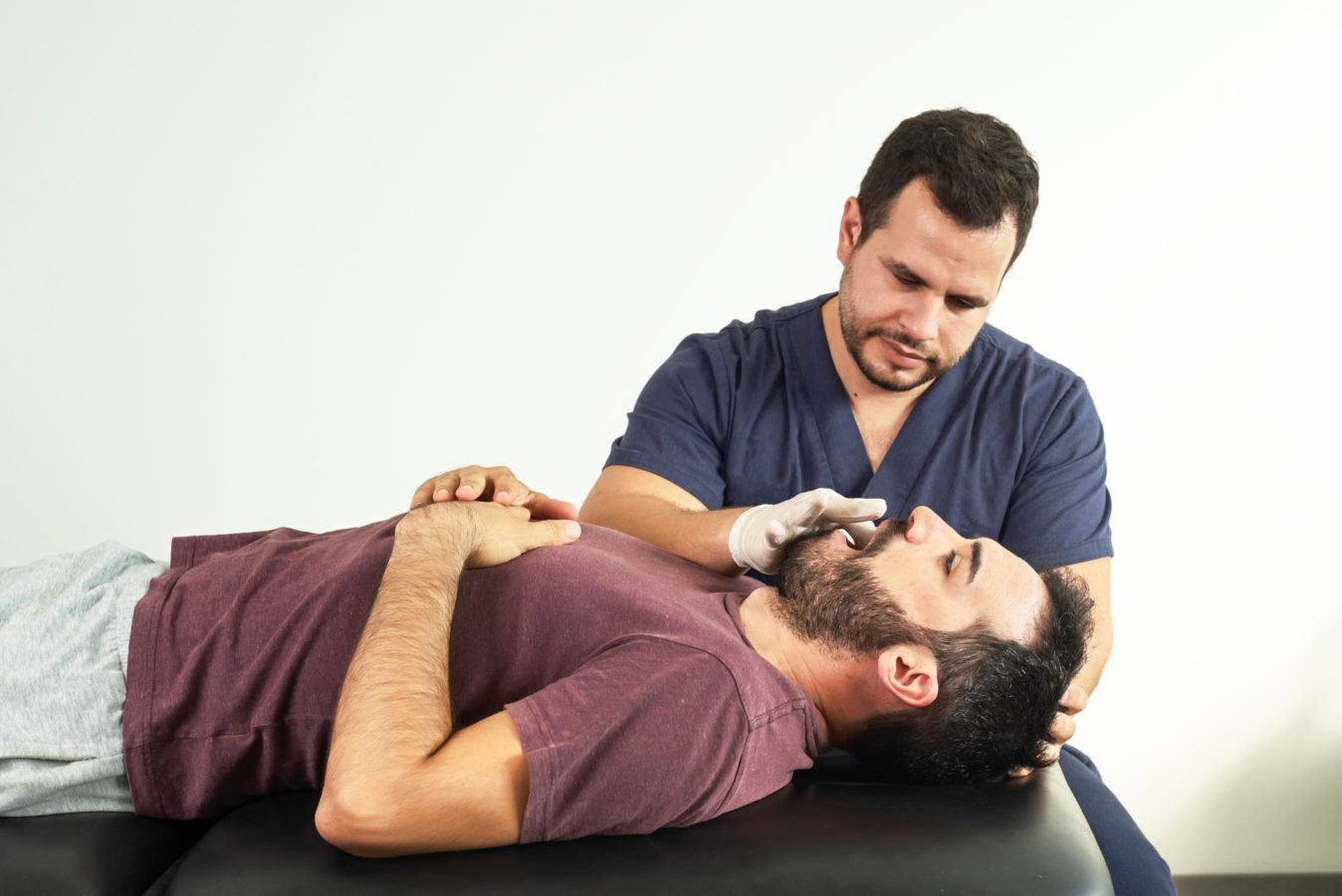
Typically caused by TMJ disorders, jaw pain can limit the normal functioning of the jaw, causing pain and discomfort.
Temporomandibular joint disorder (TMD) refers to a painful dysfunction of the temporomandibular joint (TMJ). The joint consists of the upper temporal bone connected to your skull and the mandible, or the lower jawbone.
If you’re suffering from TMD, you may be experiencing pain and inflammation, headaches, limited range of motion, stiffness or locking of the jaw, and popping or clicking when opening or closing the mouth. Physical therapy for jaw pain can help alleviate many of these symptoms.


Your physical therapist will complete a comprehensive evaluation, including examining the neck, thoracic spine, and jaw. Once complete, your PT will create a customized
program. Treatment for jaw pain may include:

*Services are not available at every location. Visit our Locations page for more details.